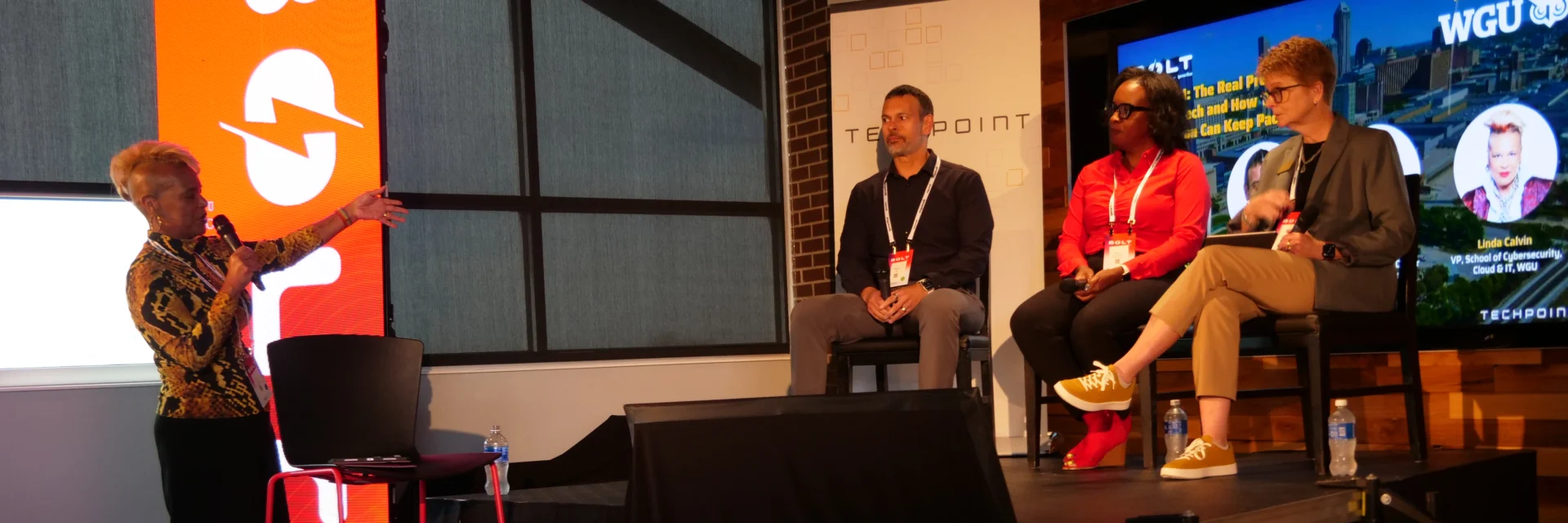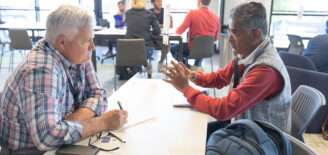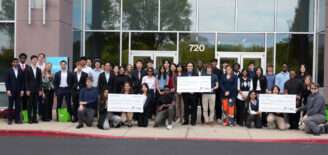At this year’s BOLT Conference, powered by gener8tor, TechPoint hosted a panel of talent & workforce experts who discussed a wide variety of topics related to tech adoption and responding to the changing needs of the modern workforce.
This panel, made possible by presenting sponsor WGU, brought together four leaders shaping Indiana’s digital future:
- Nicole Neatly-Holmes, CISO, City of Indianapolis & Marion County
- Raman Ohri, CEO, SEP
- Carol Smith, CIO, DePauw University
- and moderator Linda Calvin, VP, School of Cybersecurity, Cloud and IT, WGU
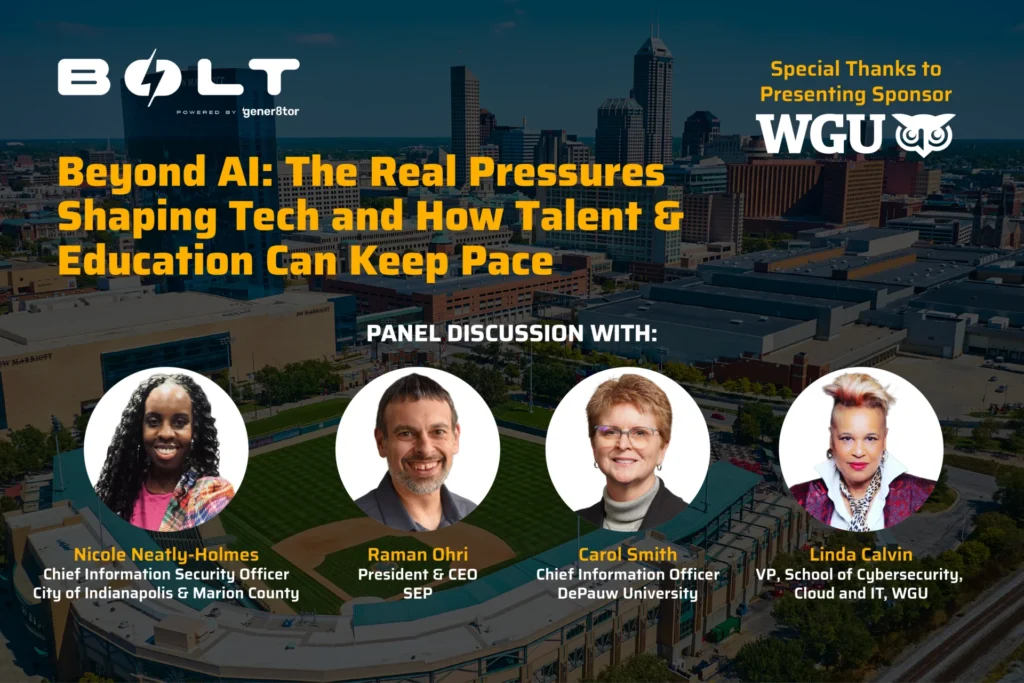
Together, the panelists explored how AI, cybersecurity, and workforce development are converging, and what it means for leaders across industries.
Linda began with a comparison: a 1968 episode of Star Trek tells a cautionary tale of the ultimate computer reducing crew needs, improving efficiency, but removing the need for a human crew. That is, until key systems start malfunctioning. The lesson? Embedded biases can still get out of control when we go too far in replacing human decision-makers with automation.
Below are four key takeaways from that discussion. These themes reflect where Indiana’s digital innovation economy, and the people who make up this community, are headed next.
People Are Our Strongest Cyber Defense, and Our Weakest Link
Every technology conversation eventually comes back to people. Cybersecurity isn’t just a technical challenge — it’s a human one.
Panelists agreed that the best security posture starts with culture, not compliance. Security has to be relatable and personal. It’s not enough to just follow a checklist, people need to understand how their everyday actions affect risk and what those very real consequences are. Tools and policies only go so far when the real vulnerability lies in how humans behave, communicate, and make decisions under pressure.
One example from the world of education was the high usage of LLMs in student assignments. The discussion centered around providing students with guidance to use AI tools safely and responsibly, with central guidance and governance being provided.
Training, trust, and communication remain the most powerful (and most overlooked) parts of every organization’s defense strategy.
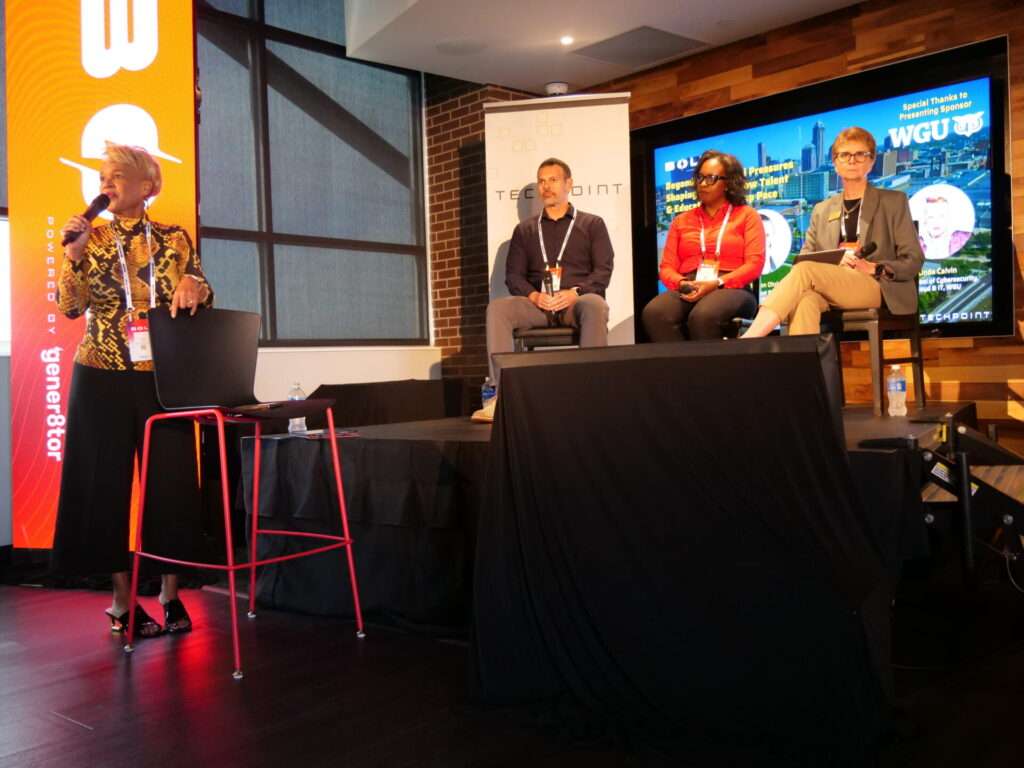
Rethinking Talent in the Age of AI
While headlines focus on hiring experienced AI specialists, many organizations are missing an opportunity to hire and invest in early-career and emerging talent. The panel challenged employers to broaden their view of readiness and invest in the next generation of problem solvers. There is a significant need for work-based learning opportunities and a shortage of opportunities for students and entry-level applicants.
Did you know: TechPoint’s new Xtern Challenge program provides students with hands-on learning opportunities that promote peer and professional networking, in a competition-based environment, through partnerships with employers. Learn more →
Degrees and certifications still have value to many employers, but consider also how challenging the certification is (a day-long course is not as valuable as one that requires long-term planning and hands-on learning). Whether on the industry side or within higher ed, panelists agreed bridges need to be fortified between education/training and application.
Because of how quickly technologies are evolving, what’s becoming even more critical are curiosity, adaptability, and durable skills. You need the ability to ask good questions, navigate ambiguity, and collaborate across disciplines.
Indiana’s smaller, more connected tech ecosystem gives us an advantage here. We can move faster, experiment earlier, and build the kind of long-term partnerships between employers and educators that make skills-based hiring real.
Closing the Gap Between Education & Industry
One of the most consistent themes: educators and employers have to communicate.
As Calvin noted during the session, educators need to be “on the field” too. Panelists discussed how institutions can embed industry relevance into curriculum, not just through guest lectures but through co-created experiences like educator externships, project-based learning, and interdisciplinary collaboration that mirrors the complexity of modern work.
Students and workers alike need to understand more than how to use AI. They need to understand why it matters — what problems it solves, what risks it introduces, and how it changes the nature of work itself.
Responsible Tech Adoption and the Security Imperative
AI adoption is moving fast; sometimes faster than strategy or governance can keep up. As noted in TechPoint’s recent report, AI-Driven Skills for Indiana’s Economy, the rate of AI adoption in U.S. households has far exceeded previous emerging technologies.
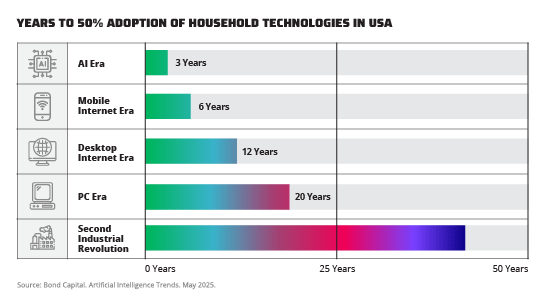
The panel emphasized that successful implementation starts with intention: aligning new tools with real business needs, measurable outcomes, and responsible data use.
Security was a major undercurrent throughout the discussion. In the public sector, adoption is often slow and fragmented. In the private sector, it can be rushed and unregulated. Both carry risk. Every organization, regardless of size or industry, needs clear policies around access, data privacy, and transparency.
Ultimately, security isn’t just IT’s job anymore. Everyone needs basic literacy in how these systems work and where the vulnerabilities are. The question isn’t whether AI will reshape our workflows; it’s whether we’ll be ready for the responsibilities that come with it.
So, What’s Next? Building Indiana’s Future Tech Workforce
The panel closed on an optimistic note: Indiana’s advantage lies in its community. We’re big enough to innovate at scale, but small enough to stay connected. That closeness—between employers, educators, policymakers, and technologists—is what will allow Indiana to lead responsibly through the next wave of digital transformation.
None of us can guess exactly what the future holds, but our mission should be to prepare our workforce to provide real value in the world.
Read More From TechPoint’s Talent Convening at BOLT
How Indiana Can Lead in the Age of AI: Insights from TechPoint’s AI Workforce Report →
BOLT Breakout Discussions: What Indiana’s Tech and Education Leaders Are Saying →
More From TechPoint
Explore data, insights, and actionable frameworks in AI-Driven Skills for Indiana’s Economy →

